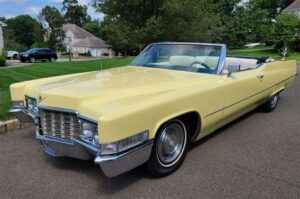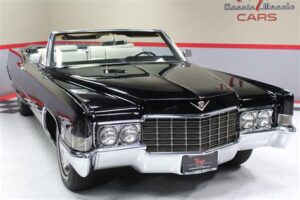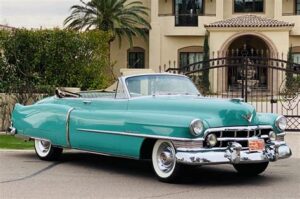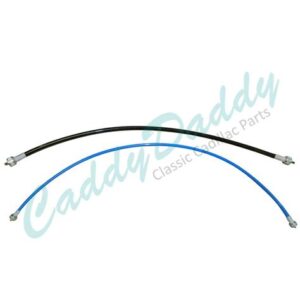Are you looking to enhance your Cadillac’s performance and extend its lifespan? A crucial component that plays a significant role in your vehicle’s efficiency is the catalytic converter. This essential part not only reduces harmful emissions but also ensures your engine runs smoothly. However, understanding how Cadillac catalytic converters function, as well as recognizing common issues related to their performance, is vital for any car owner. In this article, we will explore the intricacies of Cadillac catalytic converters, diagnose potential problems, and provide step-by-step instructions on effective replacement. Additionally, we’ll discuss the benefits of upgrading to a high-performance catalytic converter to elevate your ride. Whether you’re seeking answers for common FAQs or specific guidance, we’ve got you covered. Dive in to unlock the full potential of your Cadillac today!
Understanding Cadillac Catalytic Converters And Their Functionality
The cadillac catalytic converter is a crucial component of your vehicle’s exhaust system. Its primary function is to reduce harmful emissions, converting them into less harmful substances before they are released into the atmosphere. This process not only helps in complying with environmental regulations but also enhances the overall performance of your Cadillac. Let’s delve deeper into how Cadillac catalytic converters function and their importance in the vehicle’s operation.
At its core, the catalytic converter uses a chemical reaction to transform pollutants. The typical pollutants targeted include:
| Pollutants | Converted Into |
|---|---|
| Carbon Monoxide (CO) | Carbon Dioxide (CO2) |
| Hydrocarbons (HC) | Water (H2O) and Carbon Dioxide (CO2) |
| Nitrogen Oxides (NOx) | Nitrogen (N2) and Oxygen (O2) |
When exhaust gases pass through the cadillac catalytic converter, they flow over a catalyst, typically made from precious metals like platinum, palladium, and rhodium. These catalysts facilitate the conversion process by providing a surface for the reactions to occur without being consumed themselves.
Moreover, Cadillac catalytic converters are designed to maintain optimal operating temperatures for these reactions. They rely on heat from the exhaust gases, which helps in activating the catalysts for efficient pollutant breakdown. Additionally, proper maintenance and regular checks can ensure that the catalytic converter functions effectively, thus prolonging the life of your Cadillac and improving overall fuel efficiency.
Understanding the functionality of your Cadillac’s catalytic converter is essential for preserving its performance and compliance with emissions standards. Regular maintenance and timely replacements can help avoid costly repairs and ensure that your vehicle remains environmentally friendly.
Common Issues That Affect Cadillac Catalytic Performance
Cadillac catalytic converters play a crucial role in reducing harmful emissions and improving vehicle efficiency. However, several issues can hinder their performance, leading to various engine problems and decreased fuel efficiency. Here are some common issues that can affect the performance of your cadillac catalytic converter:
- Clogging: Over time, carbon buildup and contaminants can clog the catalytic converter, restricting exhaust flow and reducing its efficiency.
- Overheating: High exhaust temperatures due to engine misfires or fuel system issues can damage the internal elements of the cadillac catalytic converter, leading to failure.
- Physical Damage: Road debris or improper handling during repairs can cause physical damage to the catalytic converter, affecting its function.
- Exhaust Leaks: Leaks in the exhaust system before the converter can lead to incorrect readings from the oxygen sensors, causing poor performance.
- Fuel Quality: Using poor-quality fuel can introduce contaminants that clog or impair the functionality of the cadillac catalytic converter.
- Oxygen Sensor Failure: A malfunctioning oxygen sensor can result in incorrect fuel-to-air mixtures, which may lead to converter damage over time.
- Poor Maintenance: Neglecting regular vehicle maintenance can contribute to issues with the catalytic converter, as it relies on other engine systems functioning properly.
Addressing these common issues promptly can help maintain your cadillac catalytic converter’s performance and extend its lifespan. Regular check-ups and proactive maintenance are key to avoiding costly repairs down the line.
Steps For Diagnosing Cadillac Catalytic Converter Problems
Diagnosing issues with your cadillac catalytic converter can be crucial for maintaining your vehicle’s performance and efficiency. Here are some key steps to help you identify potential problems:
1. Check Engine Light
The first indication of a potential issue is often the check engine light. Use an OBD-II scanner to check for error codes related to the cadillac catalytic converter. Codes such as P0420, P0430, or others can indicate a malfunction.
2. Visual Inspection
Perform a thorough visual inspection of the cadillac catalytic converter. Look for signs of physical damage, such as dents or rust. Ensure that all connections and exhaust pipes are secure and in good condition.
3. Temperature Test
Use an infrared thermometer to measure the temperatures of the catalytic converter’s inlet and outlet. A healthy converter typically has a higher inlet temperature than outlet temperature. If the outlet temperature is similar or lower, this may indicate a blockage or failure.
4. Exhaust Pressure Test
Another effective method is to conduct an exhaust pressure test. High back pressure may signify an obstruction in the cadillac catalytic converter. This is done by measuring the pressure on either side of the converter using a gauge.
5. Performance Evaluation
Monitor your vehicle’s performance. Noticeable drops in fuel efficiency, rough idling, or poor acceleration may indicate that the cadillac catalytic converter is not functioning properly.
6. Inspect Associated Components
Problems with the cadillac catalytic converter can often correlate with issues in other components of the exhaust system. Check the oxygen sensors, exhaust pipes, and muffler for any faults that might affect the converter’s performance.
By following these steps, you can effectively diagnose any issues with your cadillac catalytic converter, allowing for timely repairs and maintaining your vehicle’s overall performance.
How To Replace A Cadillac Catalytic Converter Effectively
Replacing a cadillac catalytic converter can seem like a daunting task, but with the right tools and steps, it can be accomplished effectively. Follow this guide to ensure a smooth replacement process.
Tools and Materials Needed:
- Jack and jack stands or a hydraulic lift
- Wrench set
- Screwdriver set
- Replacement catalytic converter
- O2 sensor socket (if needed)
- Exhaust gasket or sealant
- Safety glasses and gloves
Step-by-Step Replacement Process:
- Prepare Your Vehicle: Start by parking your Cadillac on a level surface and engaging the parking brake. If necessary, use jack stands or a hydraulic lift to elevate the vehicle safely.
- Locate the Catalytic Converter: Depending on your model, the catalytic converter is typically located between the exhaust manifold and the exhaust pipe. Consult your owner’s manual if you’re unsure of its location.
- Disconnect the Battery: For safety, disconnect the negative terminal of the battery to prevent any electrical issues during the replacement.
- Remove the Old Catalytic Converter: Using your wrench set, remove the bolts connecting the catalytic converter to the exhaust system. If your vehicle has O2 sensors, carefully disconnect them before removing the converter.
- Inspect Exhaust Components: Before installing the new part, check for any signs of damage or wear in surrounding exhaust components such as pipes and gaskets. Replace them if necessary.
- Install the New Catalytic Converter: Place the new cadillac catalytic converter in position and reconnect the bolts securely. Ensure that any O2 sensors are reattached as needed.
- Apply Exhaust Gasket: If required, apply a new exhaust gasket or sealant to prevent leaks.
- Reconnect the Battery: Once everything is securely installed, reconnect the negative terminal of the battery.
- Test Your Work: Start your vehicle and check for any exhaust leaks around the new converter. It’s also a good time to ensure the Check Engine light is off, indicating everything is functioning well.
Replacing a cadillac catalytic converter is a critical process that can enhance vehicle efficiency and performance. If you encounter any difficulties during the replacement, consulting a professional mechanic is always a wise choice.
Benefits Of Upgrading To A High-Performance Cadillac Catalytic Converter
Upgrading to a high-performance cadillac catalytic converter can significantly enhance your vehicle’s performance and efficiency. Here are some key benefits to consider:
1. Improved Exhaust Flow: High-performance catalytic converters are designed to minimize back pressure and improve exhaust flow. This can lead to better engine performance, increased horsepower, and improved throttle response.
2. Enhanced Fuel Efficiency: With better exhaust flow, your engine can operate more efficiently, which often results in better fuel economy. This not only saves you money at the pump but also reduces emissions.
3. Increased Durability: Many performance catalytic converters are constructed with high-quality materials that can withstand extreme conditions. As a result, they may have a longer lifespan compared to standard converters, reducing the need for frequent replacements.
4. Better Emission Control: Upgrading to a high-performance cadillac catalytic converter can improve the overall efficiency of your vehicle’s emissions system. This ensures that your vehicle meets or exceeds environmental regulations, which is increasingly important in today’s regulatory climate.
5. Enhanced Sound: High-performance catalytic converters can also alter the sound of your exhaust, giving your Cadillac a more aggressive tone without being overly loud, providing a more enjoyable driving experience.
6. Customization Options: Many high-performance converters come with a variety of options that allow you to tailor the exhaust system to your preferences, whether that means adjusting back pressure or enhancing overall performance.
Upgrading to a high-performance cadillac catalytic converter offers a multitude of advantages for those looking to improve their vehicle’s power, efficiency, and longevity. Consider the benefits as you decide on your next upgrade.
Frequently Asked Questions
What is a Cadillac catalytic converter?
A Cadillac catalytic converter is an exhaust component that reduces harmful emissions from the engine by converting toxic gases into less harmful substances before they exit the vehicle.
How does a Cadillac catalytic converter work?
It works by utilizing a chemical reaction that occurs within its internal catalyst materials, typically platinum, palladium, and rhodium, which helps to convert carbon monoxide, hydrocarbons, and nitrogen oxides into carbon dioxide and nitrogen.
Why is the catalytic converter important for Cadillac vehicles?
The catalytic converter is essential for ensuring that Cadillac vehicles meet environmental regulations and standards, while also improving engine performance and fuel efficiency.
What are the signs of a failing Cadillac catalytic converter?
Signs of a failing catalytic converter include decreased engine performance, unusual noises from the exhaust, a check engine light activation, and a rotten egg smell due to excess sulfur.
How much does it cost to replace a Cadillac catalytic converter?
The cost of replacing a Cadillac catalytic converter can vary widely depending on the model and labor costs, typically ranging from $1,000 to $3,000.
Can I drive my Cadillac with a bad catalytic converter?
While it’s technically possible to drive with a bad catalytic converter, it is not advisable as it can lead to further engine damage, decreased performance, and increased emissions.
Are there aftermarket catalytic converters available for Cadillacs?
Yes, there are aftermarket catalytic converters available for Cadillacs, but it’s crucial to ensure they meet compliance with local emissions regulations and match the vehicle’s specifications.





